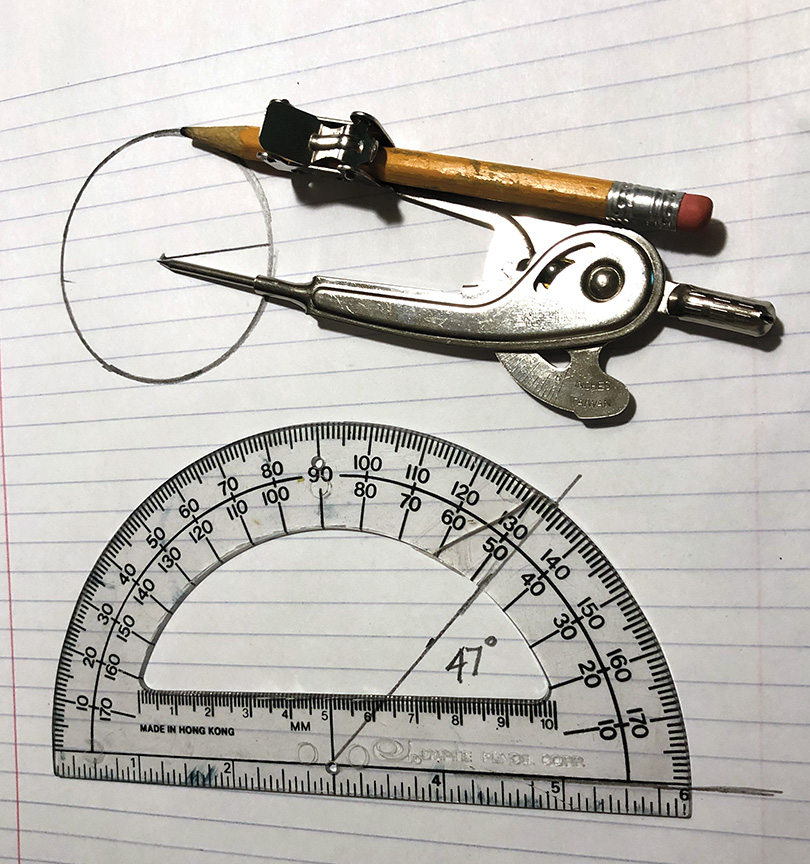
Cool tools for school, useful for math class and art class too.
The protractor was first used by mariners to create or read maps and navigational charts as early as the 13th Century. Records are unclear as to who actually devised the first protractor, but it’s possible that ancient Egyptian architects used a similar device to measure and create angles.
Over the centuries, the protractor has been crafted from wood, ivory, brass, steel and plastic. Variations range from a semi-circle design to a full circle; in 1925 the Hart Combination design combined the protractor, ruler, and square into one tool.
Generally, the protractor only has measurement lines on one side, so users may have to flip it over to read it correctly; in 2009 a British math teacher designed a protractor that could be read from either side, marketed as The Angler.
The compass has been attributed to the ancient Romans, but it was astrometer Galileo Galilei (1564-1642) that promoted its multiple uses and marketed it to his mathematics students.
In 1597, he devised his own design while teaching in Padua, Italy. He then published “Le Operazioni del Compasso Geometrico e Militare,” or “The Operation of the Geometric and Military Compass,” in 1606, which included the compass tool.
Early compasses used two needle points, so circle shapes were inscribed, rather than drawn. The attachment for a pencil was devised in the last century. Two-needle compasses are still marketed, primarily for measuring.
Both the protractor and compass shown here are inscribed as being products of the Empire Pencil Co. for use by school students. The protractor was made in Hong Kong and dates to the late 1960’s.
















